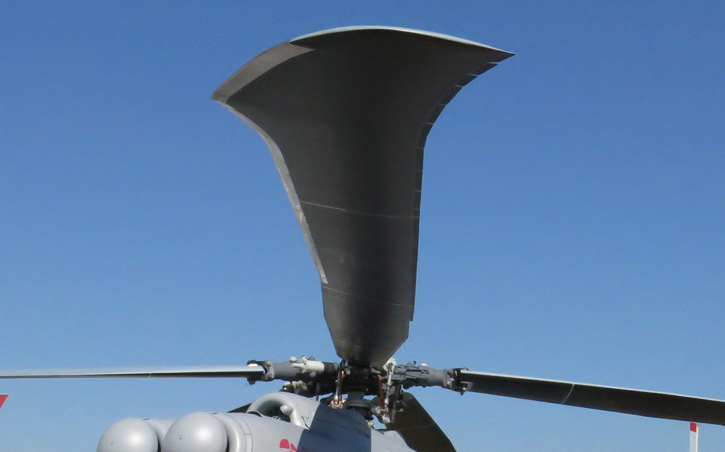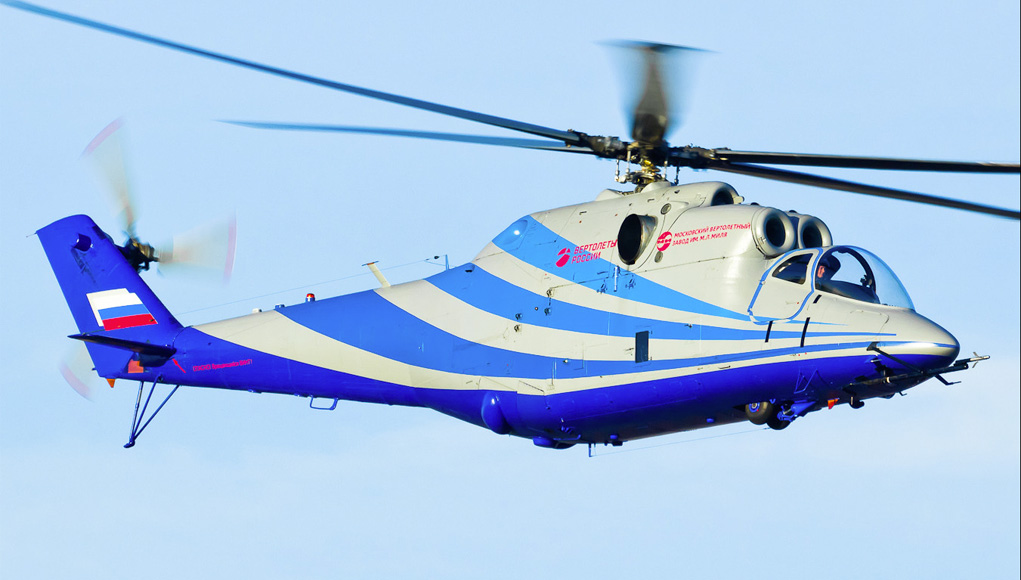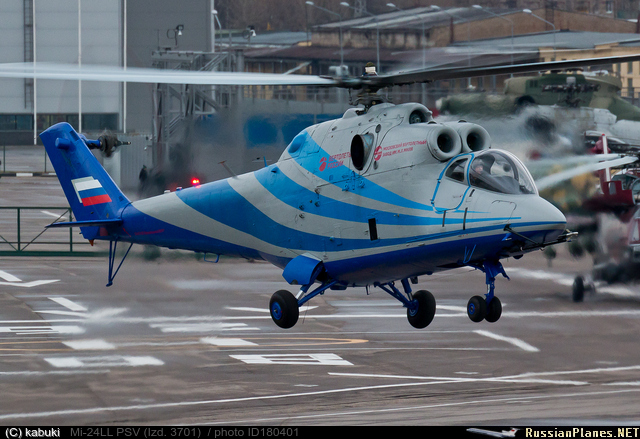Russian Helicopters’ MIL division has begun flight testing of a experimental version of a Mi-24K helicopter that could increase the helicopter’s cruising speed by up to 30 percent. The blue painted helicopter testbed made its maiden flight from MIL’s test center in Tomilino, on 23 December 2015.
The helicopter testbed is fitted with new rotor blades designed with curved tips that improve the helicopter speed and stability at high speed. The helicopter testbed will also test an advanced, modular and integrated avionics architecture developed by the electronics company KERT.
MIL’s designers expect the helicopter to achieve a maximum level speed of 216 kt; compared to the current 180 knots maximum speed of the Mi-24/35. Cruising speed is expected to increase to 183-194 kt, compared to the current 143 kt. The helicopter will also improve maximum climb rate at sea level to 60 feet/second (compared to the current 41 f/s).
The helicopter is powered by a pair of Klimov VK-2500-01 turboshaft engines that power the modern Ka-50/52 and Mil Mi-28. Each engine develops 2,400 shp at takeoff and 1,900 shp at maximum continuous mode are powering the helicopter. The VK-2500 is a modern high-hot variant of the Klimov’s TV3-117, which has been the standard powerplant for Mi-24/35 helicopters.
Top photo by: Timopfey Nikishin

The single-seat test-bed called “Demonstrator PSV,” (a Russian acronym for “Prospective Speedy Helicopter”) has a maximum takeoff weight of 11.5 tons.
Equipping the Mi-35 with these rotors will be able to increase its cruising speed by up to 30 percent. If proven effective, these blades will be able to increase the maximum and cruising speed of the Mi-28MH by 10 and 13 percent proportionally. Transition of the new rotor blade technology to production aircraft could start in 2018, if tests are proven successful.
Russian helicopters, which now operates the two main helicopter producers in Russia – Kamov and Mil, is also exploring a more ambitious upgrade program that would require major engine replacement (beyond the current change) for the entire fleet. This plan, explored by Russian Helicopters’ Kamov division, will enable higher velocities of up to 270 knots, but will likely require completely new airframes. It could be implemented by mid 2020s.





















